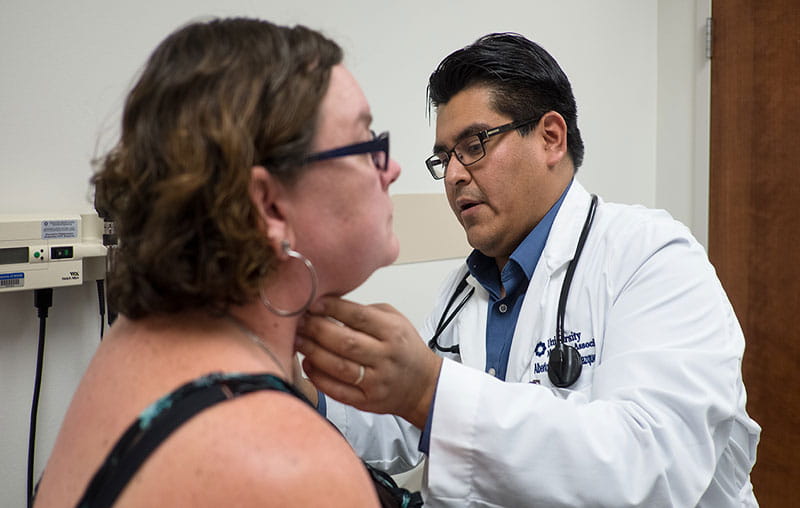Dr. Alberto Chavez Velazquez is an endocrinologist at University Health’s Texas Diabetes Institute. He discusses how diabetes can harm your eyesight. He also identifies the early signs of diabetic retinopathy and how to prevent it.
Retinopathy, or a loss of clear vision, can happen without diabetes, but diabetes greatly increases your risk of developing the condition and is the leading cause of blindness.
How Diabetes Affects Vision
Diabetes can damage tiny blood vessels that nourish the retina, causing the blood vessels to become leaky. Fluid leaks out of the vessels and into the retinal tissue, which thickens the retina, the result often begins as blurred vision.
“It’s very important to get adequate control for those individuals with diabetes because retinopathy is one of the major microvascular complications and fortunately can be prevented,” Velazquez said.
People with prediabetes should also be aware of their risk for retinopathy. “Between 8-10% of people with prediabetes already show signs of retinopathy,” Velazquez said.
Early Signs of Diabetic Retinopathy
- Seeing floaters or spots
- Cloudy vision
- Trouble seeing at night or seeing double
- Redness and pain in the eye
- Loss of peripheral vision
Get Regular Vision Screenings
Velazquez says people with prediabetes and Type 2 diabetes should get their vision screened regularly. “Patients with Type 2 diabetes should be screened at diagnosis and then every year. Patients with high blood pressure are also at increased risk of retinopathy,” Velazquez said.
Diabetes Care at University Health
Learn more about the world-class diabetes care at the Texas Diabetes Institute.





